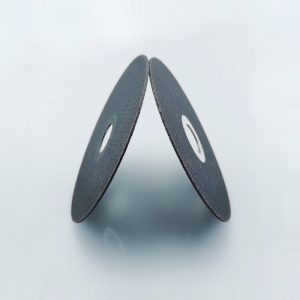What angle grinder disc for fiberglass?
What angle grinder disc for fiberglass?
Fiberglass, a composite material made of glass fibers embedded in a resin matrix, is widely used in various industries for its lightweight, durable, and corrosion-resistant properties.

Understanding Fiberglass:
Fiberglass, also known as glass-reinforced plastic (GRP) or glass-fiber-reinforced polymer (GFRP), is a composite material composed of fine glass fibers embedded in a polymer resin matrix. It is valued for its strength-to-weight ratio, corrosion resistance, and versatility, making it suitable for a wide range of applications, including construction, marine, automotive, aerospace, and manufacturing.
Factors to Consider When Selecting Angle Grinder Disc for Fiberglass:
1. Material Compatibility:
– Fiberglass is a composite material composed of glass fibers and resin. When selecting an angle grinder disc for fiberglass, ensure that the disc is compatible with both the glass fibers and the resin matrix to avoid damaging or delamination of the material.
– Choose abrasive discs specifically designed for working with fiberglass, as these discs are engineered to provide efficient material removal while minimizing the risk of fiber damage or surface distortion.
2. Abrasive Material:
– Angle grinder discs for fiberglass are typically made of abrasive materials such as aluminum oxide, silicon carbide, or zirconia alumina. These abrasive materials offer different cutting efficiencies, durability, and performance characteristics, depending on the application and material properties.
– Consider the specific requirements of your fiberglass project, such as material removal rate, surface finish, and heat generation, when selecting the abrasive material for the angle grinder disc.
3. Disc Type and Design:
– Angle grinder discs for fiberglass are available in various types and designs, including grinding discs, flap discs, cutting discs, and sanding discs. Each type of disc is tailored to specific applications and provides unique benefits and performance characteristics.
– Grinding discs are suitable for stock removal and shaping tasks, while flap discs offer both grinding and finishing capabilities with reduced heat buildup and smoother finishes. Cutting discs are used for cutting fiberglass panels or components while sanding discs are employed for surface preparation and finishing.
4. Grit Size:
– Angle grinder discs come in different grit sizes, ranging from coarse to fine, to accommodate various material removal rates and surface finishes. Coarser grits (lower numbers) are suitable for rapid stock removal and shaping tasks, while finer grits (higher numbers) are preferred for smoothing and finishing applications.
– When working with fiberglass, consider using finer grit abrasive discs to minimize surface roughness, fiber damage, and the risk of delamination. Finer grits also help achieve smoother surface finishes and improve overall surface quality.
5. Disc Diameter and Thickness:
– Angle grinder discs for fiberglass are available in different diameters and thicknesses to suit different grinder models and applications. Standard disc diameters range from 4 to 7 inches, with thicknesses typically ranging from 1/16 to 1/4 inch.
– Choose the appropriate disc diameter and thickness based on the size of the grinder and the specific requirements of your fiberglass project. Thicker discs provide increased stability and durability, while thinner discs offer greater flexibility and maneuverability in tight spaces.
Types of Angle Grinder Discs for Fiberglass:
1. Grinding Discs:
– Grinding discs, also known as grinding wheels, are designed for aggressive material removal and shaping tasks on fiberglass surfaces. These discs feature abrasive grains bonded to a rigid backing material, providing high cutting efficiency and stock removal rates.
– Choose grinding discs with medium to coarse grit sizes for initial material removal and shaping of fiberglass components. Avoid using overly aggressive grinding discs that may cause excessive heat buildup or surface damage to the fiberglass.
2. Flap Discs:
– Flap discs combine grinding and finishing capabilities in a single abrasive tool, making them versatile options for fiberglass applications. These discs feature overlapping abrasive flaps arranged radially around a central hub, allowing for smoother finishes and reduced heat generation compared to conventional grinding discs.
– Select flap discs with fine to medium grit sizes for blending, finishing, and deburring fiberglass surfaces. Flap discs with a flexible backing material offer improved conformability and access to contoured or irregular surfaces.
3. Cutting Discs:
– Cutting discs, also known as cutoff wheels, are used for cutting fiberglass panels, sheets, or components to size. These discs feature thin profiles and reinforced designs to provide precise cuts with minimal material loss and heat generation.
– Choose cutting discs specifically designed for fiberglass cutting applications, as these discs feature specialized abrasive compositions and bond systems to prevent fiber damage and minimize dust and debris.
4. Sanding Discs:
– Sanding discs, also referred to as sandpaper discs or abrasive pads, are employed for surface preparation, smoothing, and finishing of fiberglass surfaces. These discs feature abrasive grains bonded to a flexible backing material, such as paper or cloth, to provide consistent surface finishes with minimal surface damage.
– Select sanding discs with fine to very fine grit sizes for final finishing and polishing of fiberglass surfaces. Use wet or dry sanding techniques depending on the application and desired surface quality.
Best Practices for Using Angle Grinder Discs on Fiberglass:
1. Safety Precautions:
– Prioritize safety when using angle grinder discs on fiberglass surfaces. Wear appropriate personal protective equipment (PPE), including safety glasses or goggles, gloves, and a dust mask or respirator to protect against airborne particles, dust, and debris. Additionally, wear long sleeves and pants to protect skin from abrasives and sharp edges.
2. Secure Workpiece:
– Ensure the fiberglass workpiece is securely clamped or held in place to prevent movement or vibration during grinding, cutting, or sanding operations. This helps maintain stability and accuracy while reducing the risk of accidents or injuries.
3. Use Correct Disc:
– Select the appropriate angle grinder disc type, size, and grit size for the specific fiberglass application. Using the wrong disc can lead to inefficient cutting, excessive material removal, surface damage, or premature disc wear.
4. Optimal Grinder Speed:
– Operate the angle grinder at the manufacturer’s recommended speed for the chosen disc type and size. Excessive speed can cause overheating, disc wear, and surface damage, while insufficient speed may result in ineffective cutting or grinding performance.
5. Light Pressure:
– Apply light, even pressure when using angle grinder discs on fiberglass surfaces to avoid excessive material removal, surface gouging, or fiber damage. Let the abrasive disc do the work, and avoid forcing or pushing the grinder against the workpiece.
6. Cooling and Lubrication:
– Use water or a suitable coolant to cool and lubricate the fiberglass surface during cutting, grinding, or sanding operations. Cooling fluids help dissipate heat, reduce friction, and prolong disc life while improving surface finishes and minimizing dust and debris.
7. Work in Stages:
– Break down larger fiberglass cutting or grinding tasks into smaller, manageable stages to achieve more consistent results and minimize fatigue. Perform multiple passes with gradually finer grit discs for sanding and finishing to achieve the desired surface smoothness and quality.
8. Clean Work Area:
– Keep the work area clean and free of debris, dust, and clutter to maintain a safe and organized workspace. Remove excess dust and debris using a vacuum, compressed air, or a damp cloth to prevent accumulation and potential hazards.
9. Inspect Discs:
– Regularly inspect angle grinder discs for signs of wear, damage, or deformation, such as cracks, chips, or uneven wear. Replace worn or damaged discs promptly to prevent accidents, injuries, and compromised performance.
10. Proper Storage:
– Store angle grinder discs in a dry, cool environment away from moisture, heat, and direct sunlight to maintain their integrity and effectiveness. Avoid stacking or placing heavy objects on top of discs, and store them in their original packaging or dedicated storage containers to prevent damage.
News
Contact Us
Contact: Kamel Abrasives
Phone: 86-15639772803 - Eva Lee / 86-18530871671 - Gareth Bayley / 86-13663827325 - Ryan Qiao
Tel: 86-371-88828885
E-mail: sales@kamel.com.cn
Add: High Technology Area, Zhengzhou, Henan, China
